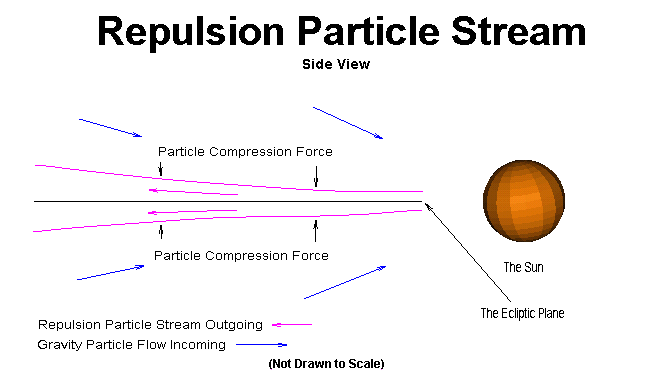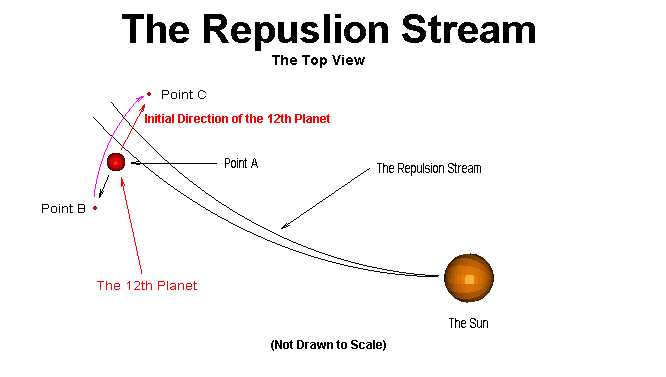

In the side view of the Sun and the ecliptic plane, the repulsion particles
emanates from the Sunís equator in 8 concentrated streams fanning
slowly outward. This phenomena can be observed when viewing galaxies. Do you
think the arms of stars in galaxies segregate by chance? No, depending upon the
placement gravitational masses within the nucleus of the galaxy, that will
determine the formation of repulsion streams from intermittent to stable, there
frequency and particle density. These streams sweep the resident stars in front
of it pushing them in a pin wheel fashion. The incoming gravity particles
produce a net force 90 degrees towards the ecliptic increasing as the density of
the particle field approaches the Sun. This is why the planets except for Pluto
and the debris around Saturn, Neptune and Uranus stay within a narrow ecliptic
band. In the zone where the gravity and repulsion particles mix and pass each
other, turbulent eddies and independent currents form, causing erratic motion
for objects caught along the edges of both fields.

In the top view the repulsion stream is sweeping counter clockwise. At Point A, the 12th planet in this diagram is moving by its own momentum south to north when it encounters the repulsion particle stream. The forward motion of the 12th planet stops and the stream pushes the 12th planet into retrograde motion towards point B. At Point B, the original motion of the 12th planet has pushed to the rear edge of the repulsion stream. The energy that caused retrograde motion now pushes the 12th forward and up into the ecliptic in a quick release of force coupled with its initial momentum. This is responsible for the forward spurt towards Point C and Earth and the increased magnetic grip on the holding the Atlantic Rift. This results in the Atlantic crust to undergo stretch and the Pacific crust and related plates to compress, thus the earthquakes.
All Rights Reserved:© Copyright 2004